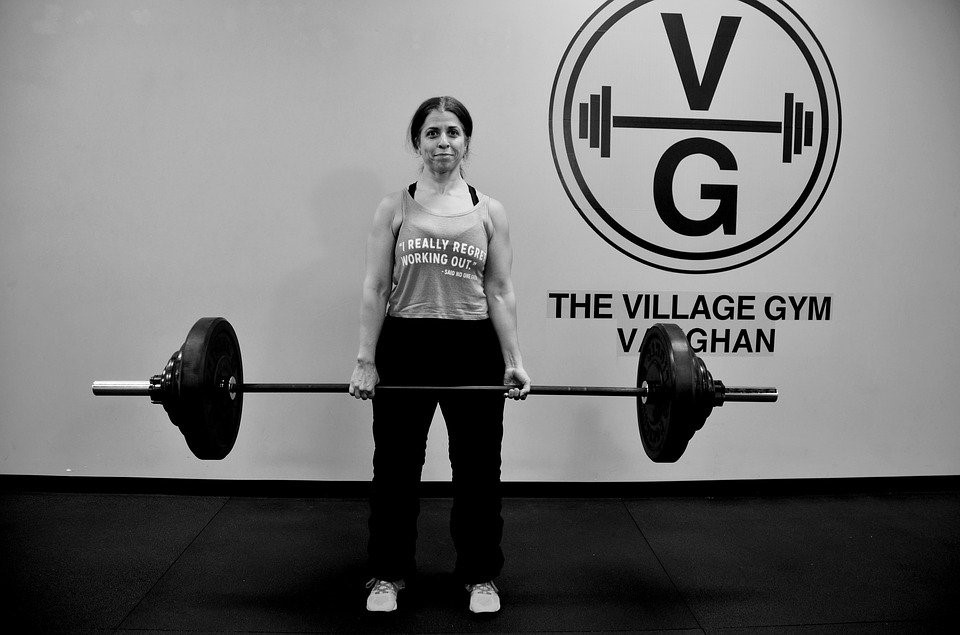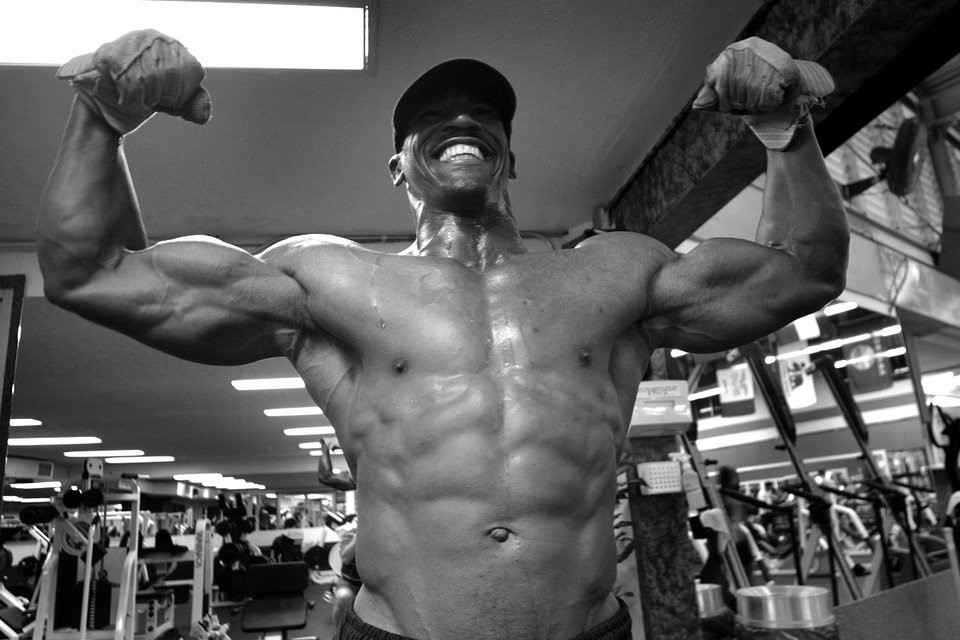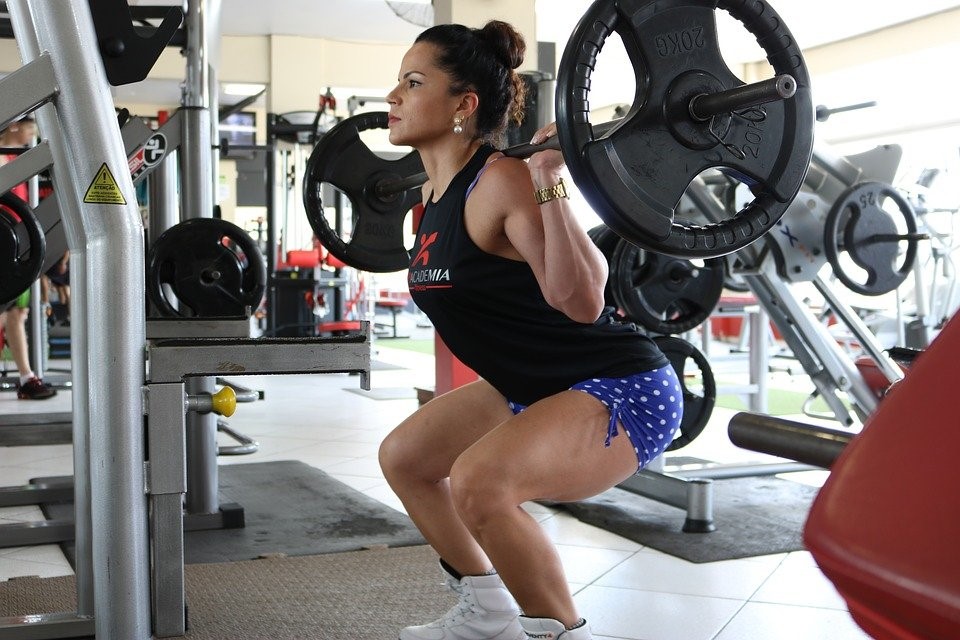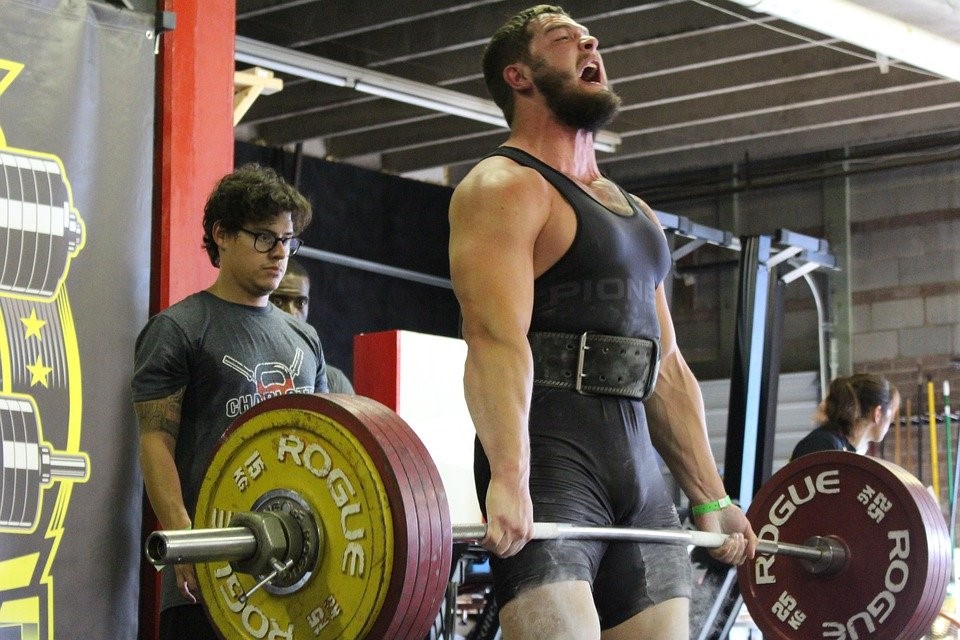Last Updated on October 26, 2022 by admin
If you are new to working out, there is a good chance that this entire debate on powerlifting vs bodybuilding makes almost no sense to you. After all, it sounds like they might be the same thing, right? Well, the truth is that, although powerlifting and bodybuilding both involve the lifting of weights, they are entirely different types of exercises that achieve completely mixed results.
Granted, if you are visiting the free weights section of your local gym for the first time, you might not be able to tell the difference. The pros will probably give you that weird death stare and let out a few grunts when you make eye contact.
Not to worry, it’s all part of the game. Powerlifting and bodybuilding both require the participants to work with seemingly ill-advised amounts of weight. You might see a guy arching his back so far back that you would think his spine will break or a lady taking on a barbell full of plates on either end with no regard for their own neck. All this in the name of achieving their desired results.
But what are those results, and can you swap one type of workout for the other? Let’s take a quick look at powerlifting vs bodybuilding to see what kind of training requirements make up part of each sport and the main nutritional differences.
What Is Powerlifting?
Powerlifting is a sport that focuses on brute strength infused into one single plane of motion. Participants in the sport aim to lift weights that as heavy as they can safely lift while performing these three core movements:
- The bench
- The deadlift
- The Squat
Unlike most weightlifting exercises that might require you to do 10 reps per set for three sets, in powerlifting, these reps are usually much fewer (think anything between 2 and 5), and the rest periods between sets is not the usual 30 – 60 seconds but much longer (think a couple of minutes or more).

As a powerlifter, you won’t necessarily focus on isolation exercises as much as you would with other forms of weightlifting exercises. Yes, there is still some aspect of isolation training, but it’s to a much lesser degree. Another thing that isn’t that big of a deal here is strict dieting and cardio. The truth is, with powerlifting, all your energy and focus will go into lifting as much weight as possible as opposed to getting fit enough for the New York Marathon.
Simply put, unlike bodybuilders or other forms of weight lifting where the muscles need to be sculpted and aesthetically pleasing, powerlifters only focus on actually being strong. That’s why for the most part, powerlifters will look stocky and quite frankly much bigger when compared to bodybuilders.
Powerlifting is often more competition-oriented, and in every competition, the participants are required to lift as much as they can in 1 rep. This goes across the field (squat, bench, and deadlift). As a competitor, you will be put into a specific category based on weight classes. You will be allowed a maximum of three attempts in each of the lifts, and you will be judged based on your technique. The techniques used have to meet some extremely specific criteria if the lift is judged as legal.
What Is Bodybuilding?
Bodybuilding is focused on building aesthetically pleasing muscles as opposed to strength, unlike powerlifting. The overall goal of bodybuilding is to develop a symmetrical shape as well as impressive muscle size.
The training style here mostly focuses on muscle growth (hypertrophy), extreme fat loss, and contest preparation. Both men and women can take part in a bodybuilding competition. Much like powerlifting, these competitors are placed in different categories depending on height, age, weight, disability, and body goals.
While bodybuilding exercises still include the three major compound lifts (bench, squat, and deadlift), this sport is most about isolation and working specific small muscle groups to achieve the aesthetic look required. As you have probably already guessed, the repetitions involved here are much higher than what you would find in powerlifting.
A bodybuilder would perform anywhere from 8 to 12 or even 12 to 15 reps depending on the muscles they are training on any given day. For the most part, the sets here are often followed by the next without a long rest period (30 seconds at the most).
Since maintaining an incredibly lean physique is a key element of bodybuilding, cardio exercises and a strict diet are a huge part of the program.
The thing about bodybuilding is that it’s a serious sport that requires absolute dedication since every else you do outside of the gym almost always directly affects the entire process. This means your sleeping time, eating habits, fitness, and even social habits come into play.
If you want to become a competitive bodybuilder, you need to know that you will be judged on the entire package. This means that not only will your size come into question, but your body symmetry, posing prowess, leanness, and even smile are judged as well. Women have an added criterion that could be considered an “added advantage” that includes their attire, makeup, hair, and stage presence or confidence.
When it comes to bodybuilding competitions, how much you can actually lift and how well you do it isn’t an issue here. You are judged on the kind of work you have done on your body, which means you have to find ways to bring out your best features.
This often includes spray tans that highlight your biggest and most defined muscles and mandatory poses that highlight specific muscle groups. That’s why this sport pays more attention to muscle isolation than powerlifting.

How to Train for Powerlifting
The thing about powerlifting is that it focuses solely on the three main movements: deadlift, bench, and squat. As such, training for it often involves simply focusing on these three movements and trying as much as you can to lift as much as possible. This kind of approach turns out to be extremely effective since the competition focuses on just one rep that you have three chances to perfect.
As a competitor, it’s only logical that you will conclude that focusing on the kind of exercises that train you to lift the most weight in the shortest period of time is ideal. That’s exactly the kind of conclusion that most professionals in this field have reached, and that’s why most powerlifters only every really focus on a few exercises:
- low bar back squat
- Medium-to-wide grip bench press
- Sumo or standard deadlift
All you need to do is practice these lifting techniques once for you to realize that they call upon your largest muscles and offer the most optimal leverage to lift the heaviest of loads. Of course, to get to the professional level takes conditioning, and these lifts can cause injuries if the form isn’t maintained.
Since extremely heavy loads like the ones required of professional powerlifters present overwhelming stress on your entire body, it’s advisable to use additional exercises in conjunction with the three main lifts to stabilize your entire body. Typically known as “assistance exercises,” these additional training routines help you avoid unnecessary muscle imbalances as well as reduce chances of injury.
Just to give you an idea of what kind of additional exercises you need to employ, let’s take a look at what an intermediate or maybe even an advanced powerlifter would do on a deadlift focused training day:
- Romanian deadlifts
- Good mornings
- Lunges
All of these are designed to help you as the competitor strengthen your hamstring and glutes. While powerlifting is mostly about that one rep, meaning that during training, you don’t need to focus on many reps per set, the truth is that the stronger and bigger you get, the more you will need to increase your number of reps as well as your load to increase both your muscle size and improve your strength training efforts.
How to Train for Bodybuilding
If you intend to take on bodybuilding, then you need to focus on resistance training. This means hitting those barbells, machine-based weights, and dumbbells to maximize muscle growth.
Bodybuilding calls for symmetrical muscle growth in almost every major muscle in your body. This means that you will need to focus on lifting as many reps as possible per set and isolated weight training to stimulate muscle growth in every part of your body and muscle group that matters in this kind of competition.
Depending on how big you are, there is a good chance that you will still be lifting extremely heavy weights (at least heavier than the regular gym-goer). However, whatever amount of weight you lift, it’s probably not going to be as much as what a powerlifter would lift.
As much as powerlifters focus primarily on the three core lifts: squat, deadlift, and bench, bodybuilders tend to focus on isolating specific muscle groups. This means that a typical workout routine would involve:
- Triceps extensions
- Bicep curl (a host of variations)
- Lateral shoulder raises
While powerlifters tend to include these exercises in some of their workout days for overall body strength, lean muscle, and stability in most cases, bodybuilders almost always have an isolation exercise in every single one of their workout sessions. This is in addition to high repetitions and compound exercises such as squats, benches, and deadlifts.
At this point, you might be asking yourself why you saw that obvious bodybuilder at the gym lifting unusually heavy loads with fewer repetitions as if they were looking to switch to powerlifting. The thing is bodybuilding involves a lot of strategies to improve long-term strength and overall muscle growth. This often calls for heavier lifts with lower reps, just like powerlifters who want to develop strength.
These exercises, however, don’t make up the core of a bodybuilder’s workout routine. They are merely incorporated to improve strength and allow for higher repetitions later on as the bodybuilder gets bigger and stronger. Whenever you lift heavier weights at higher repetitions, you will develop bigger, more defined muscles.
Benefits of Bodybuilding and Powerlifting Respectively
These two kinds of sports or exercises involve weightlifting to build muscle, making overlapping in technique and methods inevitable. Despite that fact, there are some extremely vast differences between the two and each one has its own benefits and disadvantages.

Benefits of Powerlifting
Whether you are training competitively or non-competitively, using heavy weights for fewer reps like professional powerlifters has some excellent benefits. Here are some of the most notable advantages of taking on this kind of exercise:
Improves Bone Density
Studies have shown that lifting an extremely heavyweight for just the single rep or lower reps in training sessions helps to stimulate connectivity tissue and bone density. Doing just one rep of the maximum load you can carry is more effective than stimulating bone and connective tissue density compared to exercising at a lower intensity.
Improves Your Functional Strength
As a powerlifter, you will essentially strain the biggest muscle groups in your body so much so that they increase their lifting capability and muscle strength. This means you will technically become a much stronger person, which makes performing typical day-to-day activities much easier for you. This is quite beneficial when you get older.
For example, taking on heavier squat and deadlift exercises makes your core and back much stronger, which means you are less likely to throw out your back doing menial chores the older you get.
Bolsters Your Motivation Level
If you were asked to list a few reasons why you are working out today, what would those reasons be? For most people, the list would look something like this:
- To be fitter
- To look better in a bathing suit
That’s it. Most people don’t consider most of the core benefits of working out and don’t really have an intrinsic motivator. However, when you take on powerlifting, you almost always have a target. Maybe you could deadlift 300lbs today but want to get to 400lbs in half a year.
How do you get there? You keep loading up your deadlifts, all the while avoiding injury. This kind of performance-based motivation is more likely to keep you going than simply having the “widest bicep” in the locker room.
Granted, the wider your bicep becomes, the bigger you will feel. You need to remember that bodybuilding involves a lot of isolated exercises, which means that you could simply be building your bicep without actually getting stronger, which is the biggest bodybuilding paradox.
Powerlifters have no such issues. This type of exercise is measurable. You can either lift more weight this week than you could last week, or you can’t. That kind of measurable increase in strength is extremely motivating for most people.
Benefits of Bodybuilding
Powerlifters are almost always stronger than bodybuilders. However, suppose you were to put a professional powerlifter next to a bodybuilder in a competition that called for aesthetics.
In that case, you will find that the bodybuilder is almost always better looking and has more muscle definition than the powerlifter.
This is because bodybuilding training calls for bringing out your muscle definition the way a human specimen or model would look, as opposed to the stocky look that most powerlifters have in general.
However, when it comes to bodybuilding benefits, there’s more to it than just aesthetics. Nutrition and weight loss are excellent reasons this kind of exercise might be the best type for most people. That being said, here are some of the most common benefits of bodybuilding:
Builds the Most Muscles
If you are looking to build muscle mass, then carrying out exercises with medium to heavy weights with high repetitions is the best method. Whether or not you are interested in becoming a professional bodybuilder, performing bodybuilding routines will help you develop bigger, more defined muscles faster.
Slows Muscle Loss
Research shows that bodybuilding resistance training is a good way to slow down or even reverse muscle loss that typically comes with age. This is something that every human being should be concerned about to maintain their health, quality of life, and strength in their twilight years.
Focuses on Nutrition
This is probably the biggest difference between bodybuilding and powerlifting – bodybuilding is more nutrition-oriented. This is mostly because you must achieve the lowest body fat percentage possible as a bodybuilder. This means that you will have to watch what you eat while training. When done correctly, this has overarching benefits that include better health overall.
While these two types of weightlifting sports may differ in their own way, they definitely have their common benefits, chief among which is that you get to have a better physique.
While powerlifting doesn’t focus much on nutrition, anyone looking to get better at their sport or get stronger will definitely focus on anything that helps their body function better. In this case, it’s sustained exercise.

